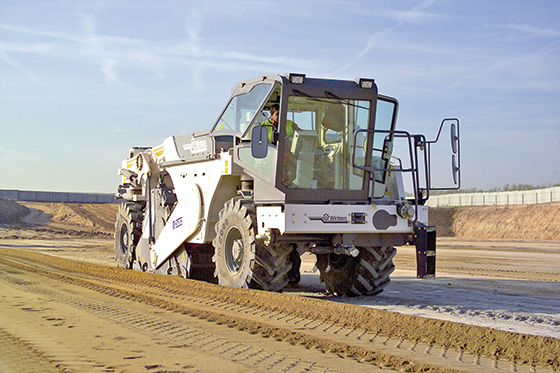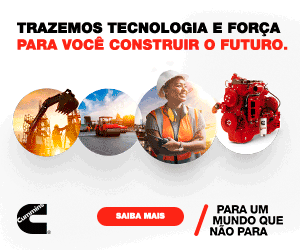Sustainable covering

Betting in the increase of soil and asphalt recyclers and stabilizers, manufacturers anticipate their launch of products that will be exposed for the first time in M&T Expo
During the M&T Expo 2015, Wirtgen and Bomag will present in first hand their new models of soil and asphalt recyclers and stabilizers. Highlighting their origin, both companies bet in German technologies, showing two machines each. The difference is that one of the manufacturers will show a compact and a medium-size machine, looking for the markets of traditional paving and spot. The other manufacturer, however, will show a medium and a large machine, anticipating European and American trends—that started some years ago—of using this equipment in wider roads.
In Brazil, soil recyclers and asphalt stabilizers (the composed name indicates that these machines perform both functions) started to become popular in the decades of 1980 and 1990. “Currently, we estimate the sale of about 70 units per year”, says Juliano Gewehr, product expert of Ciber, Brazilian company of the Wirtgen Group.
For Bomag—that received the legacy of Terex Roadbuilding machines—Brazil is becoming aware of the importance of asphalt recycling but is still too far from Europe and America, where the number of works and equipment is much more expressive. “But Brazilian population of these machines is growing each year and Bomag participates actively of this increase”, says Ivan Reginatto, marketing manager of the company.
According to him, the promising projections are based on economic and environmental aspects. In addition to reducing work costs, these machines mitigate environmental impacts caused by their operation. “For example, asphalt recycling processes reuse products that were discarded before, transforming them into economically feasible products to repair road sections or to build new roads”, says the expert.
INFINITE CYCLE
Reginatto points out that the infinite cycle of asphalt useful life is the most relevant environmental point. It makes possible to take an already worn out material and use it again like a brand new one in the road. “This technique also minimizes the need of quarry areas and disposal embankments. It is an exceptional solution for the problem of final disposition of materials in inappropriate places, mainly along the road”, says him.
Speaking about the quality of recycled pavements, the engineering manager of Bomag Elton Luís Antonello considers that in many cases the use of recyclers and stabilizers “generates mixtures that give a load capacity higher than that of the materials that would be used as base or sub-base”.
Therefore, considering the necessity of ensuring return on the investment for the use of these machines, the experts considers that Brazilian users are coming into a new moment of consumption of these technologies. “Until this time, market was composed mainly by rental companies or paving contractors, that could achieve adequate cost-benefit rate of their machines using them in different works along the year”, says Antonello. “Currently, contractors understood that they can carry out this service without third-part contracting and started to invest and qualify crews for operation in several points of the country.”
The operation of recyclers and stabilizers of soil and asphalt is didactically explained by Gewehr, from Wirtgen. “In asphalt recycling, in a single pass the machine removes the cap, recovers the material, adds the missing elements (bitumen, lime, gravel etc.) and applies it again, in the ideal conditions to create a new pavement”, explains him. “In soil stabilization, the cycle is the same with the difference that base materials for support are created, allowing even a thinner layer of cap.”
Reginatto, from Bomag, complements that is not uncommon the change—after recycling—from 10 cm to 5 cm in pavement thickness. As the expert explains, this occurs because the recycler generally does not apply the final layer (although this is possible in some cases). It gives higher capacity of support to base and sub-base and this allows the pavement to receive a thinner asphalt cap.
In soil stabilization, the operation is quite similar, as explains Gewehr. “In irregular soils, the machine passes, cuts the material, mixes it internally with the necessary components and applies it again. The material is more homogeneous and has the correct features for base and sub-base support”, tells him. “In these processes, the most common is to add lime (to harden more wet soils) or cement (to give to the soil the necessary structural function).”

Av. Francisco Matarazzo, 404 Cj. 701/703 Água Branca - CEP 05001-000 São Paulo/SP
Telefone (11) 3662-4159
© Sobratema. A reprodução do conteúdo total ou parcial é autorizada, desde que citada a fonte. Política de privacidade














